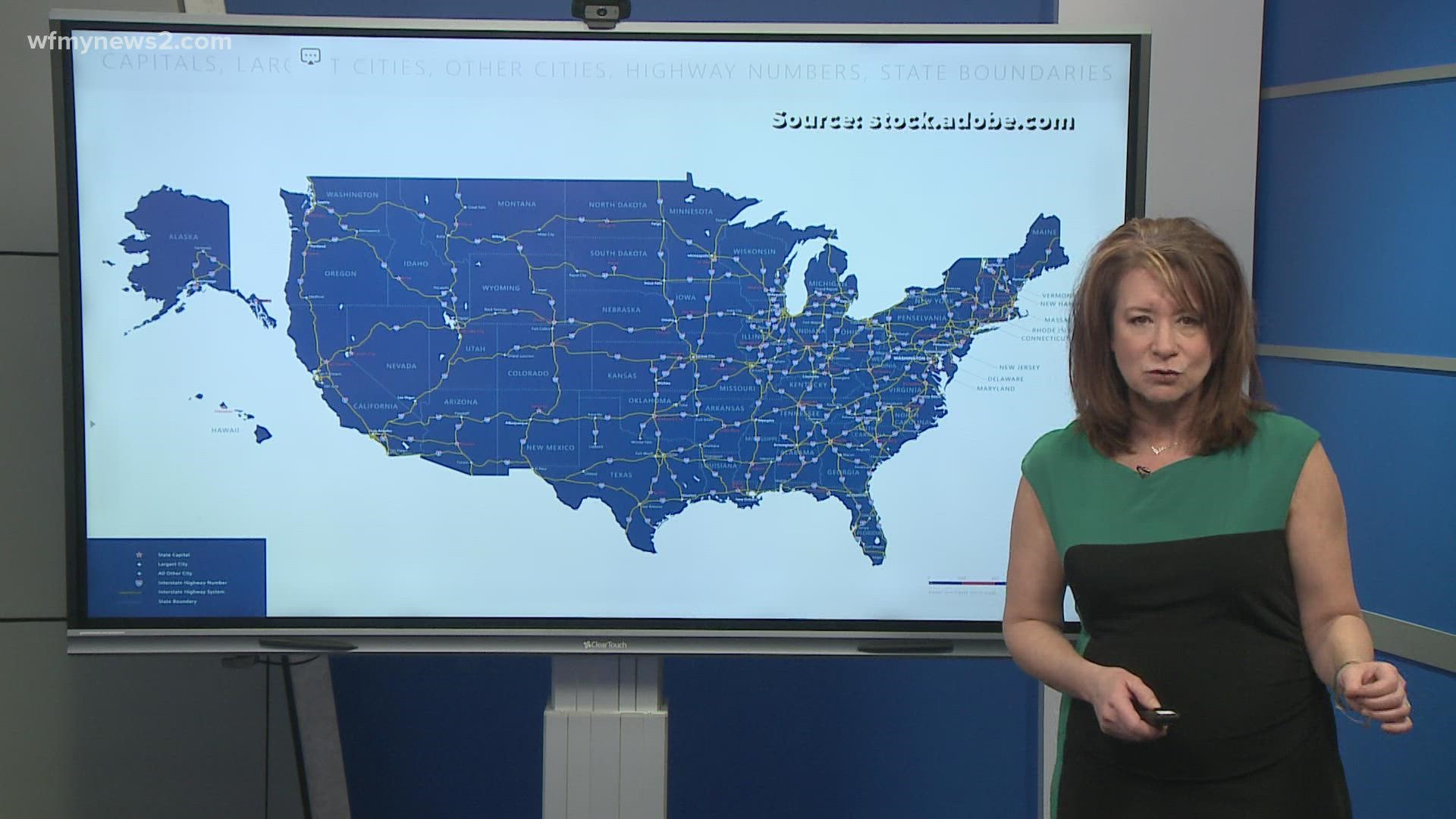GREENSBORO, N.C. — Whenever there's a story involving a plane and a highway, inevitably posts like this one found in a Reuters.com article go around claiming:
Fun Fact. The Eisenhower Insterstate System requires that one mile in every five must be straight. The straight sections are usable as airstrips in times of war or emergencies.
That would be false. It is not the fun fact of the day. The US Department of Transportation Federal Highway Administration has an entire page on their website about myths, surrounding the interstate highway system.
Fifth on the list is the one in five miles claim.
From the FHA: The myth is widespread on the internet but has no basis in law, regulation, design manual, or fact. Airplanes occasionally land on interstates when there is no alternative in an emergency, not because the interstates are designed for that purpose.
Here are the real fun facts:
The Federal-Aid Highway Act of 1944 authorized a national system of interstate highways.
It wasn't until 1956 that President Eisenhower signed into law a measure that would actually build the road with interstate construction funds.
And for those asking whatever happed to the 55 miles per hour federal speed limit? The Federal Highway Administration said there was never a national speed limit. The states determine speed limits.
Here are a few more facts for you from the FHA:
Who created the Interstate System?
The concept of an Interstate system as we know it was first described in a 1939 report to Congress called Toll Roads and Free Roads. The report rejected the toll superhighway network Congress had suggested; revenue from tolls on most segments would not support the bonds issued for their construction. However, the report added that the country needed a toll-free express highway network. Thomas H. MacDonald, Chief of the U.S. Bureau of Public Roads, and Herbert S. Fairbank, Chief of the agency's Division of Information, prepared the report. The ideas expressed in the "free roads" portion of the report evolved through further study and experience before approval of the Federal-Aid Highway Act of 1956, but the Interstate System began with MacDonald and Fairbank.
Although the Federal-Aid Highway Act of 1944 authorized designation of a "National System of Interstate Highways," the legislation did not authorize an initiating program to build it. After taking office in January 1953, President Eisenhower made revitalizing the Nation's highways one of the goals of his first term. As an army Lieutenant Colonel in 1919, Eisenhower had accompanied a military convoy across the United States and saw the poor condition of our Nation's roads. Later, during his World War II stint as Commander of the Allied Forces, his admiration for Germany's well-engineered Autobahn highway network reinforced his belief that the United States needed first-class roads. As a result, Eisenhower formed internal committees to study the idea, enlisted the Nation's Governors to offer suggestions, and met with Members of Congress to promote the proposal. When legislation failed in 1955, observers predicted that in the presidential election year of 1956, the Democratic Congress would not approve such a significant plan sought by a Republican President. Nevertheless, President Eisenhower continued to urge approval and worked with Congress to reach compromises that made approval possible. The President signed the Federal-Aid Highway Act of 1956 on June 29, 1956.
Through the remainder of his years as President, he searched for ways to solve the problems that plagued the program in its early years and pushed for continued work on the Interstate System. His leadership in promoting the 1956 Act and moving the program forward on schedule has earned President Eisenhower the title "Father of the Interstate System."

